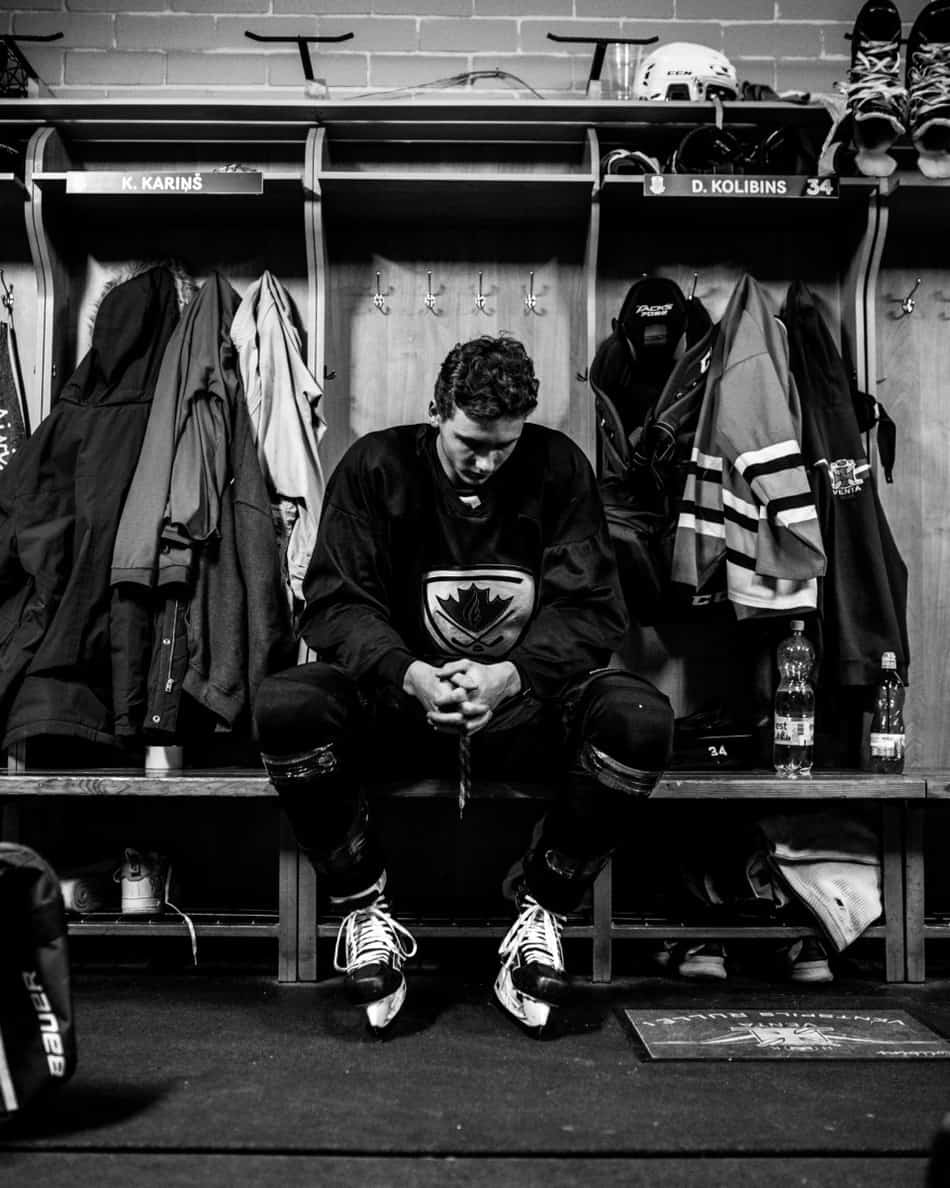It stinks. I get it. If you have ever been in a middle school locker room, or around a teenager after a sporting event, the lovely aroma permeates all around. But why do hockey players smell the worst?
Hockey Players smell so bad because their equipment is the perfect breeding ground for bacteria, which releases the terrible odor you smell. If the gear is not cleaned and aired out correctly, the stench will continue to soak into the pads, creating a more lasting effect. Mix the time it takes to properly care for the gear with how well kids usually tend to their belongings, and you will find bacteria creating a prosperous place to live. Most sports do not have the amount of gear that hockey players wear, thus hockey players are not educated on how well to take care of their gear, resulting in hockey being known for its sweet aroma.
We know hockey players smell bad, but where does that smell come from and why won’t it leave? Let’s figure out why it spreads and then get to the real question: How do we get rid of the smell that fills our house every time we get home from a game?
Why Won’t the Smell Go Away?
The bacteria that flourishes in sweat causes the smell to stay around in the pads. You might remember the term petri dish from back in middle school science lab; well that is exactly what is happening here. If you have been around hockey for any amount of time, you know that with hockey comes a smell that reminds you of the rink. If you are new to the sport, buckle up. The smells and soaked pads associated with the sport are synonymous with the hockey rink experience.
These days, most gear is able to be tossed in the wash. Most shoulder pads and additional protective gear disconnect from the outer plastic part of the piece, allowing the layer that touches the skin to be put into a washing machine. Throw the equipment in the washer, come back an hour later and let it dry. We should be good to go right? Well, I wish. You can easily get the covering (plastic part) of the pad to dry, but the main issue lies beneath the outer covering.
Because hockey creates such sweat during the game, by the time you arrive home to empty the hockey bag, bacteria has had plenty of time to bury itself deep into the pads. It does not take a biologist to know bacteria lives in moist areas. Even sending the pads through an hour of hot water in a washing machine will not destroy the bacteria that is nesting in the equipment. So how do we destroy the smell completely?
Getting Rid of the Stench
Ok enough talk about the smell- how do we rid our equipment of the odor? Wash, rinse, repeat.
- As soon as you can, wash the clothes/ gear that has just been used.
- Use as much soap as possible and wash on cold.
- Wipe down any hard surfaces with disinfectant spray.
- Hang all non- washing machine approved gear on a drying rack or equipment tree.
- Do not leave anything on the floor.
- Point any fans/ dehumidifiers towards gear, creating a cold, dry environment.
You may be surprised, but even NHL teams struggle with keeping the funky smell at bay. Teams keep 2 or 3 pairs of gloves in rotation and use hotel- size dyers to soak up every last damp part of the gear. With big budgets, NHL players are constantly rotating in new gear to keep the smell away. Not to mention, they have staff members dedicated to keeping gear fresh and replenished. Repeatedly washing, drying, and replacing gear is the best way to keep the bacteria and odors away. Also, your teammates and coaches will thank you!
If you remember anything from this article, wash on cold and dry everything. That is it. I know, seems easy. Trust me, it is harder to execute than it sounds. Bacteria can simply not grow if it does not have moisture in the air. No bacteria equals no smell.
Does Lingering Bacteria Equal Infection?
One growing concern of hockey players and parents the health of the players and more specifically infections. Hockey leagues around the world have put a spotlight on concussions and player safety, but we also need to be aware of infections that can spread because of uninformed decisions when it comes to taking care of gear correctly. Bacteria flourishes and grows in a warm, moist environment of a hockey bag; especially in travel hockey, the pads soak in the bag for hours in the trunk of a car traveling from game to game.
The most common infection that is caused by bacteria that can grow in equipment is MRSA and staph infection. These very closely related bacterias are contagious as well. Summary: wash your equipment! When you see mold on your equipment, time to dispose of the old and buy new. Sounds obvious, but you would be surprised some people just try to wash off the mold, and then wear the gear again. Talk about getting an infection. Also, remember to clean any open wounds asap. This is common sense, but hockey players are especially prone to getting an infection because of the amount of bacteria on the ice, bench, and locker room. You will even carry it home with you in the equipment bag.
Expect to buy new gear more than you would think. With growing kids, buying gear every 2 years might feel normal, but even when they stop growing, buying new equipment at the same rate is not a bad idea. The more often you purchase new stuff, the less likely you will get an infection from nasty gear and you will breathe in horrid orders as well. Also, to reduce the chance of contracting an infection, wearing layers under your pads is a good idea. This might sound obvious, but as kids get older, and they realize to reduce heat and sweat when playing means wearing fewer clothes under their pads. Encourage them to keep their skin from rubbing directly against the pads.
Education– Do I Really Have Too?
Help teammates and players understand what is happening when they leave their gear in their bag without washing it. If the gear is left in the bag for a week, everyone is going to know what happened. The younger the player, the more adult supervision and help they will need to understand what is happening. The gloves and skates will probably be the worst offenders because of the amount of sweat concentration on those areas. Educating players on how to clean and dry their gear is very important. For example, the Odor Crusher Ozone Equipment Bag has a built-in fan to help with this issue. Also, this gear station helps aerate hockey skates.
Players need to understand the lack of cleaning gear and proper hygiene can lead to infections, causing them to miss games and potentially further damage their health. If you look through the documented outbreaks in the NHL, players miss 8 games or more because of spreading infections. This is not meant to scare you, but just take the necessary means to avoid infection. There are so many tips and tricks out there about how to clean hockey gear. I will publish articles with proven ways to clean gear.

